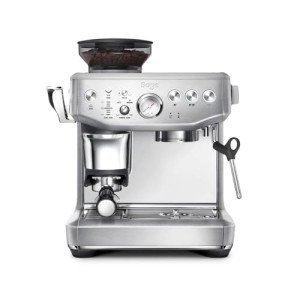The World of High-Quality Espresso Machines: A Comprehensive Guide
Espresso has ended up being a cherished drink among coffee lovers worldwide, understood for its rich taste, intense scent, and versatility. The heart of an excellent espresso lies in the machine used to brew it. High-quality espresso machines are created to provide the best shot, making them a vital financial investment for coffee enthusiasts. This short article checks out different kinds of high-quality espresso machines, their features, upkeep pointers, and answers to regularly asked concerns.
Types of High-Quality Espresso Machines
High-quality espresso machines fall under numerous classifications, catering to different preferences, skill levels, and budget plans. The main types include:
| Type of Machine | Description | Perfect User |
|---|---|---|
| Manual Espresso Machines | Requires user skill to control extraction and pressure. Uses the most control over the developing process. | Experienced baristas and enthusiasts |
| Semi-Automatic Machines | Integrates manual operation with automation. Users manage the grind and tamping, while the machine manages water dispersion. | Intermediate users |
| Automatic Espresso Machines | Automate the brewing procedure, enabling for programmable developing times and temperature levels. | Casual coffee drinkers |
| Super-Automatic Machines | Have integrated grinders and are completely automated, dealing with everything from grinding to developing and steaming. | Users looking for benefit |
| Commercial Espresso Machines | Designed for high volume use in cafes and restaurants, providing resilience and speed. | Company owner |
In-depth Overview of Each Type
Manual Espresso Machines
- Pros: Complete control over the developing procedure; can produce exceptional quality espresso.
- Cons: Requires significant skill; time-consuming.
Semi-Automatic Machines
- Pros: Balanced control, mixing manual and automatic procedures; exceptional quality espresso is still possible.
- Cons: Requires some understanding and experience to master.
Automatic Espresso Machines
- Pros: User-friendly; lowers the learning curve while still producing high-quality espresso.
- Cons: Still requires some understanding of coffee-making essentials.
Super-Automatic Machines
- Pros: Maximal convenience; little ability required; perfect for individuals or households who desire coffee without difficulty.
- Cons: Higher rate point; might lack the fine-tuning capabilities of manual machines.
Commercial Espresso Machines
- Pros: Built for longevity and performance; often consists of features for high-volume turns.
- Cons: Expensive; may be overkill for home use.
Secret Features to Consider
When searching for a high-quality espresso machine, several key functions should be considered:
- Pressure and Pump Type: Look for machines with at least 9 bars of pressure, which is essential for drawing out the very best flavor from coffee beans.
- Boiler Type: Single, double, and heat exchanger boilers each affect how the machine performs and the speed of developing.
- Develop Quality: High-quality products such as stainless-steel are preferable for toughness and aesthetics.
- Relieve of Use and Cleaning: Some machines require comprehensive cleaning, while others are created for easy maintenance.
- Temperature level Control: Consistent temperature is critical; think about machines with PID controllers for precise control.
Benefits of High-Quality Espresso Machines
Buying a high-quality espresso machine offers a wide variety of benefits:
- Superior Quality: High-end machines enable higher control, resulting in more delicious espresso.
- Sturdiness: Built to last, quality machines need fewer repair work and replacements.
- Customization: Users can take pleasure in a customized experience by adjusting grind size, shot timing, and other settings.
- Increased Convenience: Automatic and super-automatic choices permit enthusiasts to take pleasure in espresso with very little effort.
Maintenance and Care for High-Quality Espresso Machines
To keep an espresso machine working efficiently, regular maintenance is crucial. Here are suggestions for keeping a high-quality espresso machine:
Descale Regularly:
- Use a descaling option every couple of months to avoid accumulation of minerals from water, which can affect flavor and performance.
Clean the Brew Group:
- For machines with a removable brew group, tidy it routinely to ensure a clean extraction.
Replace Water Filters:
- Use a water filter and alter it as needed to minimize impurities in your brewing water.
Daily Cleanings:
- Rinse the portafilter and group head after each use to avoid oil buildup.
Watch on the Parts:
- Monitor seals, gaskets, and other parts for wear and tear and replace them as needed.
Often Asked Questions (FAQs)
1. What is the very best espresso machine for beginners?
For novices, a semi-automatic machine often provides a great balance of functionality and control, permitting users to find out the skills essential for making great espresso.
2. Are super-automatic machines worth the investment?
Yes, for those who focus on convenience and ease over control, super-automatic machines can be a deserving investment, particularly for households or busy specialists.
3. How see it here should I anticipate to invest in a high-quality espresso machine?
High-quality espresso machines range considerably in price, with manual machines starting at a few hundred dollars, while super-automatic or commercial machines can go beyond several thousand.
4. Can I make other coffee drinks with an espresso machine?
Yes, lots of espresso machines have steam wands or attachments that allow users to produce lattes, coffees, and more.
5. The length of time do espresso machines typically last?
With correct upkeep, high-quality espresso machines can last over a decade, making them a long-lasting investment in your coffee pleasure.
High-quality espresso machines yield a transformative coffee experience, whether delighted in at home or in a commercial setting. By understanding the types readily available, their functions, and the upkeep required to keep them running effectively, consumers can make informed decisions that raise their coffee-drinking experience.

